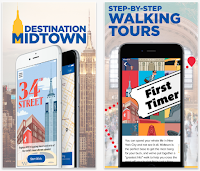 |
|
MoMA: Unfinished Conversations
|
This is the first of a regular series of posts highlighting the current art scene in New York City. I have long had an interest in the arts, and now visit to New York is complete without spending time in at least one or two the city's great art institutions like the Metropolitan Museum of Art, the Museum of Modern Art, and so many others. If You are a New Yorker, you know you are spoiled for choice when it comes to immersing yourself in the arts there.
MoMA: Unfinished Conversations: New Work from the Collection brings together works by more than a dozen artists, made in the past decade and recently acquired by The Museum of Modern Art. The artists that make up this intergenerational selection address current anxiety and unrest around the world and offer critical reflections on our present moment. The exhibition considers the intertwining themes of social protest, the effect of history on the formation of identity, and how art juxtaposes fact and fiction. From Cairo to St. Petersburg, from The Hague to Recife, the artists in the exhibition observe and interpret acts of state violence and the resistance and activism they provoke. They reexamine historical moments, evoking images of the past and claiming their places within it. They take on contemporary struggles for power, intervening into debates about government surveillance and labor exploitation. Together, these artists look back to traditions both within and beyond the visual arts to imagine possibilities for an uncertain future.
Now through July 30, 2017. More at MoMA…
 |
| Rubin Museum: Gateway to Himalayan Art |
Rubin Museum of Art
150, West 17th Street, rubinmuseum.org
The Rubin presents art that traverses Asia’s diverse cultures, regions, and narratives. The Museum’s special exhibitions celebrate art forms that range from ancient to contemporary, including photography and multimedia, while its permanent collection galleries are focused primarily on art from the Himalayan region. Of particular interest are two exhibitions: Sacred Spaces: Himalayan Wind… (through until June 5, 2017; and Gateway to Himalayan Art (through until June 27, 2017). Sacred Spaces invites visitors to reflect on devotional activities in awe-inspiring places, while Gateway to Himalayan Art introduces visitors to the main forms, concepts, and meanings of Himalayan art represented in the Rubin Museum’s collection.
Grandma's Closet At The Metropolitan Museum Of Art
Sara Berman's belongings became an unlikely meditation on immigration, re-invention and feminine independence. By Priscilla Frank, Arts Writer, The Huffington Post
Sara Berman kept her closet in perfect order ― shoes lined up in an unerring row, crisply ironed white shirts stacked one atop the other, her signature bottle of Chanel 19 perched within easy grasp. Her children and grandchildren would gaze into the modest, meticulously organized niche reverently, as if staring at a work of art. Still, they never actually imagined their mom or grandma’s closet would one day, quite literally, find its way into The Metropolitan Museum of Art.
“If someone told my mother her closet would be in the Met one day, she would have thought they were crazy,” artist, author and illustrator Maira Kalman said during a talk held at the museum last week, alongside her son, Alex Kalman, and Amelia Peck, a curator of American decorative arts at the Met. And yet, among the period rooms in the museum’s American Wing, most of which display opulent domestic craftsmanship from the 17th to 19th centuries, is Berman’s neat and tidy closet of the 1980s.
If You Go:
Now through September 5, 2017
The Metropolitan Museum of Art, Central Park & Fifth Avenue
- o0o -
Carol Rama: Antibodies at the New Museum
From April 26—September 10, 2017
235 Bowery, New Museum…
 |
| Appassionata (1940), by Carol Rama; Photo: Studio Gonella |
This exhibition is the first New York examination of the work of the late Italian artist Carol Rama. The exhibition lays claim to being the largest presentation of her work in the US.
While Rama has been largely overlooked in contemporary art discourses, her work has proven prescient and influential for many artists working today, attaining cult status and attracting renewed interest in recent years. Rama’s exhibition at the New Museum will bring together over one hundred of her paintings, objects, and works on paper, highlighting her consistent fascination with the representation of the body.
Seen together, these works present a rare opportunity to examine the ways in which Rama’s fantastical anatomies opposed the political ideology of her time and continue to speak to ideas of desire, sacrifice, repression, and liberation. “Carol Rama: Antibodies” celebrates the independence and eccentricity of this legendary artist whose work spanned half a century of contemporary art history and anticipated debates on sexuality, gender, and representation. Encompassing her entire career, the exhibition traces the development from her early erotic, harrowing depictions of “bodies without organs” through later works that invoke innards, fluids, and limbs—a miniature theater of cruelty in which metaphors of contagion and madness counteract every accepted norm.More at New Museum…
More Arts Information
Museum of Modern Art…Rubin Museum of Art…
The Metropolitan Museum of Art…





